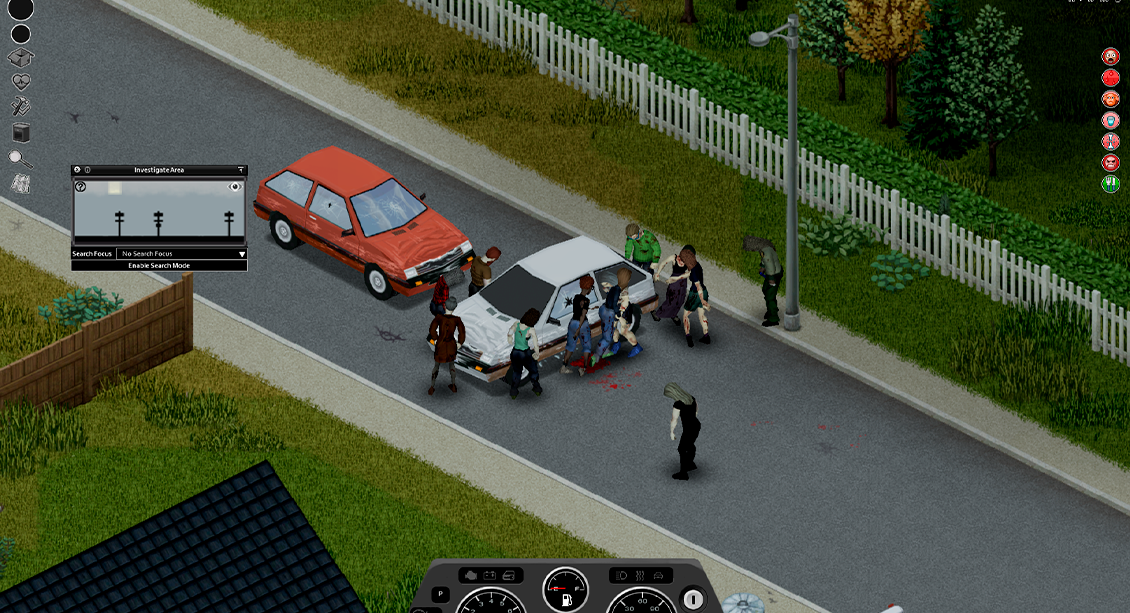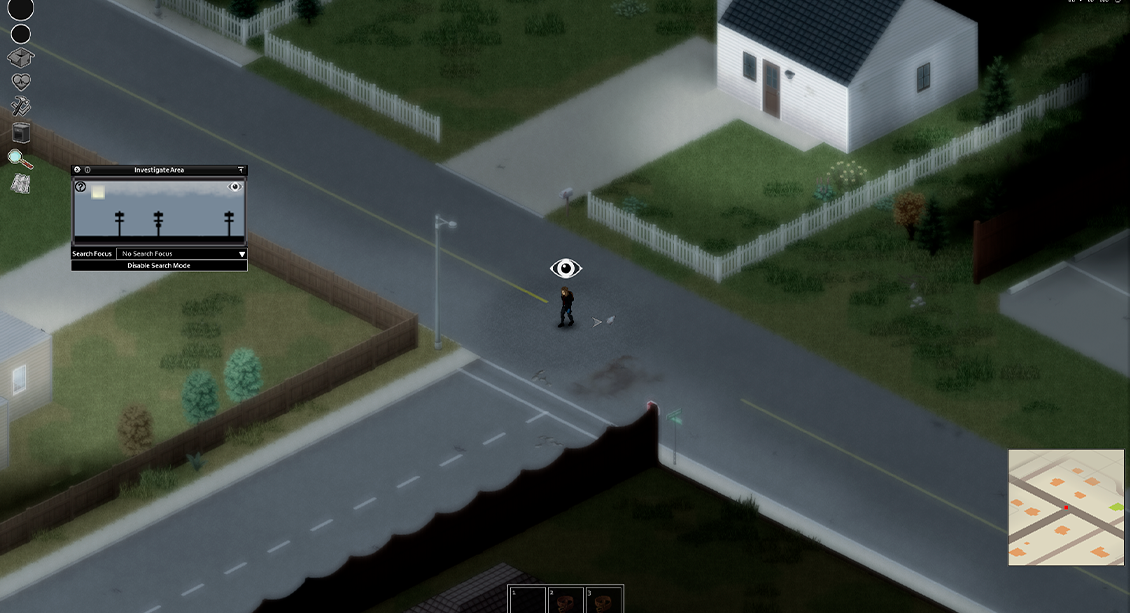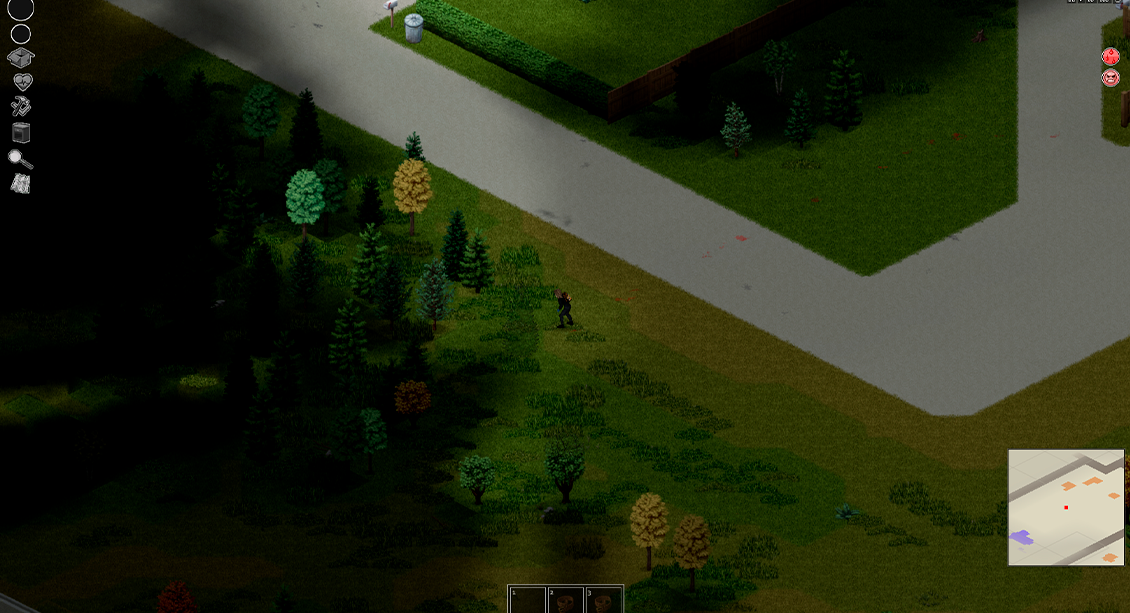How to Forage in Project Zomboid

Make Your Own Project Zomboid Server
In Project Zomboid, foraging is a crucial skill that can assist players in gathering food and supplies from the wild and forests. We'll go through the fundamentals of foraging in Project Zomboid in this article, along with some advice on how to level it up.
But first, don’t forget to set up your Project Zomboid dedicated server hosting!
Enabling Search Mode
In Project Zomboid, players need to initiate search mode by selecting the magnifying glass symbol on the screen's left side before commencing foraging. The "Investigate Area" window, which shows the environment the player is in, will be opened as a result of this action. From this point, players can explore their environment and wander around to find foraging supplies.

Identifying Forageable Items
A white eye icon will show over the player's head when they have discovered a foraging item as they walk about and search the area. This symbol could represent anything from a bush of berries to a tree with edible branches or bark. Players who locate an item can right-click it to interact with it, and they will be informed of their discovery via a notification.

Foraging for Medicinal Herbs
Players can now forage for therapeutic herbs thanks to changes made to foraging in the most recent update. Any foraging level can be used to find therapeutic herbs by characters who have the Herbalist trait or have read the Herbalist skill book. These plants can be utilized to create an array of items, including herbal remedies and teas, to help athletes recover from ailments or wounds.
Leveling up the Foraging Skill
Players must forage regularly in Project Zomboid to develop their foraging skill. They will accrue more experience points and advance in skill more quickly the more they forage. Additionally, locating particular foraging objects and devouring them will level up your foraging skill. Players can level up their foraging skill more quickly and gain experience points by consuming foraged goods.
Tips for Successful Foraging
Here are some pointers that can make foraging in Project Zomboid more efficient for players:- Discover new terrain: Players are more likely to discover fresh foraging materials the more they explore.
- Frequently check: Players should check the same regions several times to increase their chances of discovering foraging goods because they respawn over time.
- Make use of characters with the Herbalist trait: Players who have a character with the Herbalist trait should make use of their capacity to explore for therapeutic herbs at any level.
- Consume foraged stuff: Consuming foraged items gives players more experience points and can advance their foraging proficiency more quickly.
Have patience: Players who wish to master foraging need have patience and
perseverance because it can take some time to learn.
FAQ
How does the foraging skill level affect the chance of finding rare forageable items?
The likelihood of obtaining unusual forageable objects depends on one's level of foraging expertise. Finding rare forageable objects is more likely as the player's foraging ability level rises. Higher-level foragers will also be able to find forageable things in areas that are harder to access, including bogs or dense forests.
Can players forage during winter or in cold climates?
Yes, players can forage throughout the winter or in cold climates, but because of the hard environment, they can locate less forageable objects. The quantity and variety of goods that players can locate throughout the winter are significantly influenced by their foraging proficiency. It's also important to keep in mind that some foraging materials, including therapeutic herbs, could not be accessible in the winter.
Are there any negative consequences to consuming forageable items?
In Project Zomboid, consuming foraged foods has no negative effects. In fact, eating forageable objects gives players more experience points and can advance their foraging skill more quickly. Players should be mindful, though, that some foraging things might only have a few uses or might not be as useful as other food items.
Can players forage while running or in a hurry?
In Project Zomboid, foraging is not possible while moving quickly or while running. Players must walk slowly while foraging and pay close attention to their surroundings. Players that move too quickly risk missing valuable foraging objects or failing to interact with an item before it vanishes.
Can players forage in urban environments?
In Project Zomboid, foraging is not permitted in cities. Forests, fields, and meadows are the only places where foraging is allowed. However, in parks and other natural areas found in urban settings, players might be able to find some foraging-worthy things.
What is the best way to store forageable items?
Storage options for foraging supplies include crates, storage lockers, and backpacks. To prevent spoiling, store foraged materials in a cool and dry location. Foraging materials like berries and mushrooms should be used or kept as soon as possible because they might degrade quickly.
How do forageable items differ from other food items in the game?
In contrast to other food items in the game, forageable goods may only be obtained by foraging for them in the wild. You can buy, trade, or scavenge additional food supplies from structures or other places. In addition to being more perishable than other foods, forageable goods may need to be consumed right away or preserved.
Are there any dangers associated with foraging in Project Zomboid?
In Project Zomboid, foraging can be risky, particularly in regions where there are a lot of zombies. Constantly stay aware of your surroundings and be prepared for self-defense if required. Players should use cautious and do their study on the objects they are foraging for before ingesting them because some forageable materials may be harmful or sicken people if swallowed.
Can players forage for non-edible items?
In Project Zomboid, foraging is possible for non-edible objects like crafting supplies or therapeutic herbs. These non-edible materials can be used to make a variety of things or are employed for their therapeutic qualities. Finding non-edible items through foraging can be a wonderful way to collect supplies for crafting or to make survival goods.
Are there any perks or skills that can enhance foraging in Project Zomboid?
In Project Zomboid, there are a number of advantages and abilities that can improve foraging. Characters can forage for medical herbs at any foraging level thanks to the Herbalist trait and skill book, and the Botany skill enhances the likelihood of finding uncommon forageable things. Additionally, the Nimble trait speeds up foraging, while the Lumberjack trait allows characters to forage wood at any level of foraging.
Final Thoughts
In Project Zomboid, foraging is a crucial talent that can assist players in gathering useful resources and food. Players can become master foragers and improve their odds of survival in the game by turning on search mode, recognizing forageable things, and building up their foraging skill.Players can begin foraging with confidence and navigate the forest with ease if they follow these pointers and techniques.
Make Your Own Project Zomboid Server
Copyright 2019-2025 © ScalaCube - All Rights Reserved.